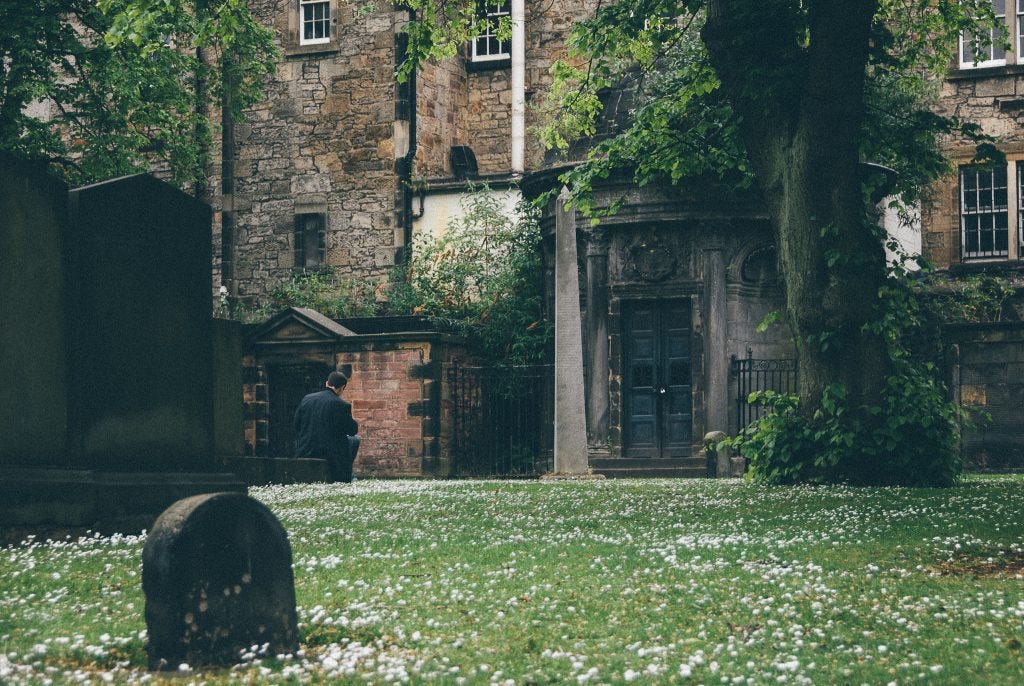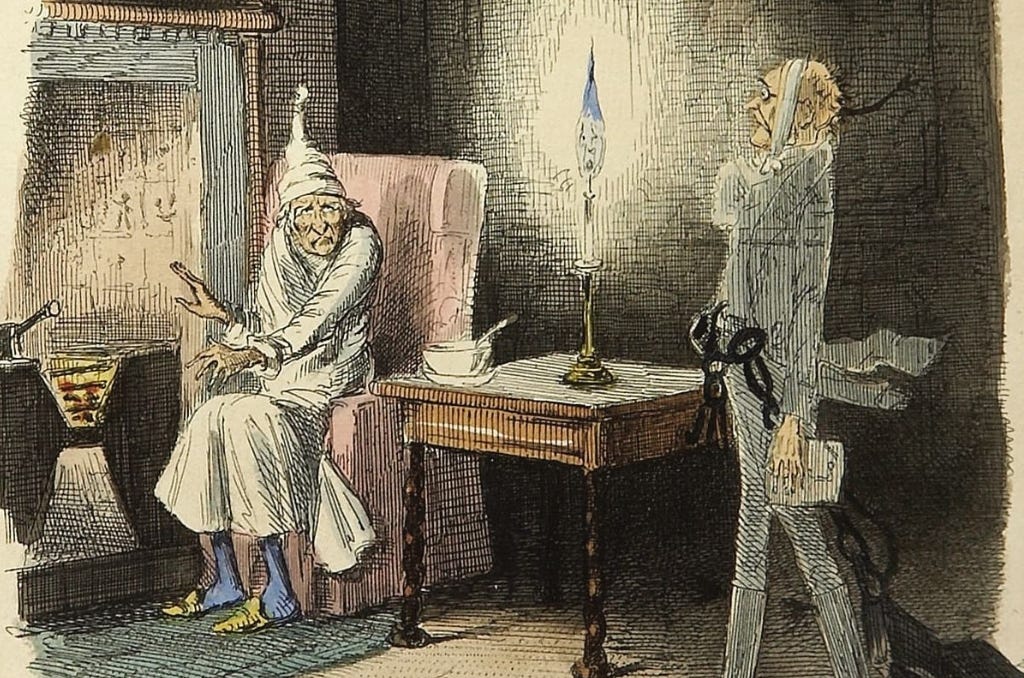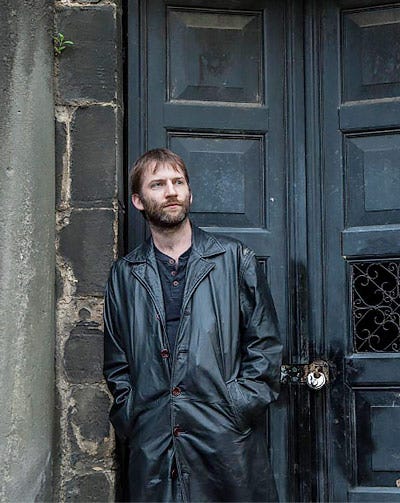Night At The Mausoleum: Taking on The MacKenzie Poltergeist
My investigation into the reality of Europe's most infamous poltergeist...
originally published in 2019 on the Hayley is a Ghost blog
The communication methods of modern society are very different from those used just a couple of decades ago, and as these continue to evolve so too do the ways in which folk stories evolve. This means that it isn’t unusual for the origin of a ghost story to shift and change much quicker than it would have through traditional retelling, and it means that hauntings don’t always come to a conclusion as they might have before.
In updated afterthoughts for This House is Haunted, Guy Lyon Playfair1 notes that the incidence of poltergeist cases seem to be on the decline. That said, Playfair was probably not thinking about what would happen should a Poltergeist gain a social media following because, despite the rarity of Poltergeist cases, there are some such entities which certainly dominate media coverage in the UK, have a fanbase (you know who you are), and break a few of those classic “rules” along the way. For example, the Black Monk of Pontefract has morphed from an entity which terrorised a family in the 1970s and then vanished, into a tourist gimmick which appears to perform on demand several times a week for ghost event group attendees. But of all the UK poltergeists with an online presence, the one said to terrorise visitors to Greyfriars Kirkyard in Edinburgh is the most social media savvy, or at least it would seem so.
The popularity for the #MackenziePoltergeist can in part be attributed to the twitter account for the City of the Dead tours (@CotDtours), who run ghost walks in Edinburgh. Their tweets present to the world an ever-growing collection of photographs of bruised, agitated, and bloody human flesh. The wounds are said to be the work of supernatural forces which were awoken in 1998 when a homeless man seeking shelter broke into the tomb of Sir George MacKenzie in Greyfriars Kirkyard2. Anybody with even the slightest awareness of this haunting will know that it is said that the man fell through the floor into a secret burial chamber, stirring something sinister from the darkness there.
Below is a video from City of the Dead tours claiming to show over 200 injuries caused by the Poltergeist:
The rest- as they say -is history. Certainly, the haunting of Greyfriars Kirkyard by the MacKenzie Poltergeist is infamous for its historic links to the Covenanters’ prison which sits some seventy or so feet away from MacKenzie’s tomb itself. Following a rebellion against Charles II by Scottish Protestant Covenanters in the 1600’s, MacKenzie (who was the King’s advocate) was tasked with the responsibility of making an example of those who had taken a stand against the crown for what they considered religious persecution. They were imprisoned in appalling conditions in an area of land which is now part of the Kirkyard itself, and met a horrid end to their lives there.
Each year, people visit Greyfriars to take part in one of the many ghost tours and to see if they will be attacked or will witness supernatural activity in the Covenanters’ prison or around the Black Mausoleum. If they’re one of the lucky ones (and the odds seem to be in their favour) a photo of their faceless-yet-wounded body will be Tweeted for all to see - forever now a part of Edinburgh’s allegedly “most famous” ghost story. However, scratch at the surface of this decade-long, active haunting as the poltergeist might scratch at a person’s back, and you’ll find more questions than answers.
Waking Up a Ghost
Trying to establish an origin for the MacKenzie Poltergeist is more difficult than one might expect. For example, some of the earliest press coverage of the Kirkyard haunting makes no mention of the 1998 break-in. In fact, the first mention in the media of the haunting dates from 1999 and states that paranormal researchers believed that the ghost of MacKenzie is likely tormented because he is buried ‘right next to an old Covenanters’ prison’.3
That’s a rather different story than one told by tour guides today. In his book on the MacKenzie Poltergeist titled ‘The Ghost That Haunted Itself’, City of the Dead tours founder Jan Andrew-Henderson4, provides an almost fictional-sounding account of the alleged 1998 break-in. It involves an innocent passerby walking their dog soon fleeing in terror as a homeless tomb raider bursts out in fright.
Other tour guides have their own versions of this tale, too. For example, during an interview in a 2018 episode of the MonsterTalk podcast, Fred Fogarty- a Kirkyard tour guide for over a decade -tells the co-hosts Blake Smith and Dr Karen Stollznow that it was a groundskeeper who investigated the ruckus instead. Fogarty details how a caretaker by the name of Graham was forced to investigate ‘a loud crashing noise coming from the legendary tomb of George Bloody MacKenzie’, and in the interview claims to have met Graham himself.
It was this MonsterTalk episode which inspired me to investigate the story behind the MacKenzie Poltergeist in the first place. I wasn’t the only listener to do so either. Edinburgh-based Sandra Brindley also collaborated on this research into the origin story and discovered that although the church in Greyfriars is under the care of the Church of Scotland, the Kirkyard itself is maintained by Edinburgh council.
Brindley was able to establish that Edinburgh council has never employed somebody to be in the Kirkyard overnight and that any groundskeeper working in the kirkyard would not have been there at night time as this sort of work is typically carried out during daylight hours.
This isn’t the only inconsistency with the origin story of this Poltergeist. In ‘The Ghost That Haunts Itself’, Andrew-Henderson claims that the poltergeist first made its presence known in 1999 when a woman peering into the tomb was knocked over by a blast of icy-cold air to her face.
Press coverage of the spooky happenings suggest a different weird history with one 1999 article claiming that ‘almost 100 incidents in the last 50 years … point to MacKenzie’s presence’5. A new haunting stirred by an alleged break-in, or something that has been active for decades already at that point? It depends on who you ask, but finding a record of an intrusion into the tomb in 1998 is difficult.
It seems strange that such a thing would not be on record somewhere when just three years later, two teenage boys would cause scandal and make international headlines for doing exactly the same thing...
In 2003, Sonny Devlin was just 17-years-old, and his unnamed friend was 15-years-old when they broke into George MacKenzie’s tomb and used a pen knife to cut the head off of MacKenzie’s corpse. Another teenager who was present provided witness testimony in court that the pair had then used the severed head as a puppet by placing a hand up through the neck, and had thrown it around as one would a football.
The pair were the first to be put on trial for violation of sepulchre - an old grave robbing law -in over 100 years. They almost faced a jail sentence but were instead released on probation6. All of the scandal that surrounded the 2003 incident was not to be found for an alleged similar incident in 1998. This, along with the lack of available evidence seems to suggest this occurrence probably didn’t happen at all. Or if it did, there is only eye-witness testimony alone to rely on which isn’t sufficiently accurate.
Narrative of a Ghost Story
Stories of ghosts traditionally have moralistic lessons at their core, and ghosts have always been useful to the societies they haunt. They punish people from beyond the grave, they absolve the wrongly accused, they point to the hidden family treasure, they warn the living of impending doom… but George MacKenzie’s ghost is a performing monkey whose handle is cranked by tour guides on a daily basis.
The story of the ghost of George MacKenzie was one of a ghost troubled by what he had done in his life. A man laid to rest so close to the place in which he’d imprisoned those who were mistreated and killed that his soul is not able to rest at all. A warning to us all that our wrongdoing catches up with us all in the end. Now? Now it’s a story of something almost inhuman stirred from its slumber by a man often labelled a “tramp”. We’re not told of what society did wrong to the man who sought shelter in a tomb of all places, but of what he is alleged to have done to poor old George MacKenzie.
This shift from a restless spirit to a vengeful one is noticeable in the press coverage of the haunting over the years and changes the way in which people talk and think about not only the ghost but also the legacy of MacKenzie himself.
When I questioned a number of friends who are interested in ghosts, not one of them could tell me about the uprising against Charles II or the conditions the prisoners were kept in at the orders of MacKenzie, but they were able to tell me precise details of how the poltergeist might hurt me if I were to wander too closely to his tomb.
I’ve visited the tomb several times and not a hair on my head has been harmed, and that’s largely because I didn’t have somebody stood with me telling me what to expect.
Paying To Be Primed
When a haunting becomes a sensation it needs to continue to provide engageable content. This means that what was a neatly packaged story before that could be retold to new audiences instead becomes a sprawling tapestry which is woven before our eyes and has to keep being reinvented and added to.
To keep the story in the public eye requires new occurrences to be shared, which means that those who promote any haunting are probably susceptible to perceiving even the most uninteresting occurrences as being meaningful. The haunting becomes a sort of self-fulfilling prophecy with every visitor, every paying customer on a ghost tour contributing to the narrative of the haunting of the MacKenzie Poltergeist because they “felt a bit cold”, and they felt a bit cold because they were told they might. Or because it was cold anyway.
The power held by the narrators who lead the ghost walks shouldn’t be ignored when it comes to exploring what is really going on when people seem to be attacked by the Mackenzie Poltergeist. It isn’t unreasonable to suggest that telling visitors to the Kirkyard what has happened to other people and what they should expect is likely to make them expect something to happen to them too. It may even influence the way in which they interpret perfectly ordinary occurrences that they wouldn’t have considered paranormal in any other situation or place.
Fred Fogarty isn’t so convinced by such claims though. During his MonsterTalk interview he explained to Dr Stollznow that the tour company website, the literature, and even the start-of-tour script all contain a warning about the type of thing that might be experienced by customers, regardless of what they might personally believe, and “that the tours can cause genuine mental distress”.
Moments later though Fogarty backtracks with “you could say it’s psychosomatic, well that’s possible, but it’s not me that’s suggesting it, it’s not the power of suggestion that got them, not from me anyway. There’s nothing in our tour literature that would encourage such a thing.”
Well, which is it? That the literature and script contain something described as a warning gives some cause for concern mainly because it cannot be known just how open to suggestibility the customers attending a tour will be. Research has shown that people with pre-existing paranormal beliefs seem to be ‘more susceptible to suggestion than Disbelievers’.7
I know some would say it’s not worth examining the origins of ghost stories like that of the MacKenzie poltergeist, but I think it deserves scrutiny when those who promote it claim that people are injured on a regular basis. That turns a ghost story into an active case, and active cases should be investigated. And while it’s fair to say that the dead may not rest in Greyfriars Kirkyard, it’s almost certainly because of the humans who want to be scratched by unseen hands and those who spin tall tales about spectres, and not because of something of a supernatural origin.
Playfair, G. L. (2007) This House is Haunted, Gloucestershire, Sutton Publishing
MonsterTalk, ‘Ep. 155: The Greyfriars Kirkyard Ghost’, Available at https://www.spreaker.com/episode/the-greyfriars-kirkyard-ghost--61056516 (Accessed 10th November 2025)
Duffy, J. (2001) ‘Greyfriars is world’s most scary place; X-Files Makers’ Claim’, Scottish Daily Record, January 6th 2001, p.15.
Andrew-Henderson, J. (2001) The Ghost That Haunted Itself, Edinburgh, Mainstream Publishing,
Daily Record, (1999) ‘Brutal Ghost Attacked Us’, Scottish Daily Record, July 5 1999, p.10.
English, S (2014) ‘Scottish Grave Trial is First for 105 years’, The Times, London, March 25 2004, p.12.
Wiseman, Richard; Greening, Emma; Smith, Matthew (2003). “Belief in the paranormal and suggestion in the seance room” (PDF). British Journal of Psychology. Vol. 94 no. 3: pp. 285–297 Available at https://onlinelibrary.wiley.com/doi/pdf/10.1348/000712603767876235 (Accessed 10th November 2025)





